Lists By Lukiih is readers-supported. When you buy with my affiliate link, I may earn a small commission. Thanks!
📍 Itinerary Map
This itinerary takes you to some of Vietnam’s top destinations:
- Ninh Binh – known as the “Ha Long Bay on Land”
- Ha Giang – a region known for its epic motorbike road trip
- Ha Long Bay – the stunning world-famous bay (I recommend a less touristy alternative for this itinerary)
- Hanoi – the bustling and traditional capital of the country
- Hoi An – an ancient town known as the food capital of Vietnam and the tailoring capital of the world.
🇻🇳 Planning A Trip To Vietnam: 12 Practical Things To Know
🗓️ Itinerary Overview
Below is a great way to spend 10 days in Vietnam. This itinerary is well-researched, highlights major attractions, and reflects lessons from my travel experience.
My Vietnam trip planner has a 12-day version of this itinerary pre-filled with more details and tips.
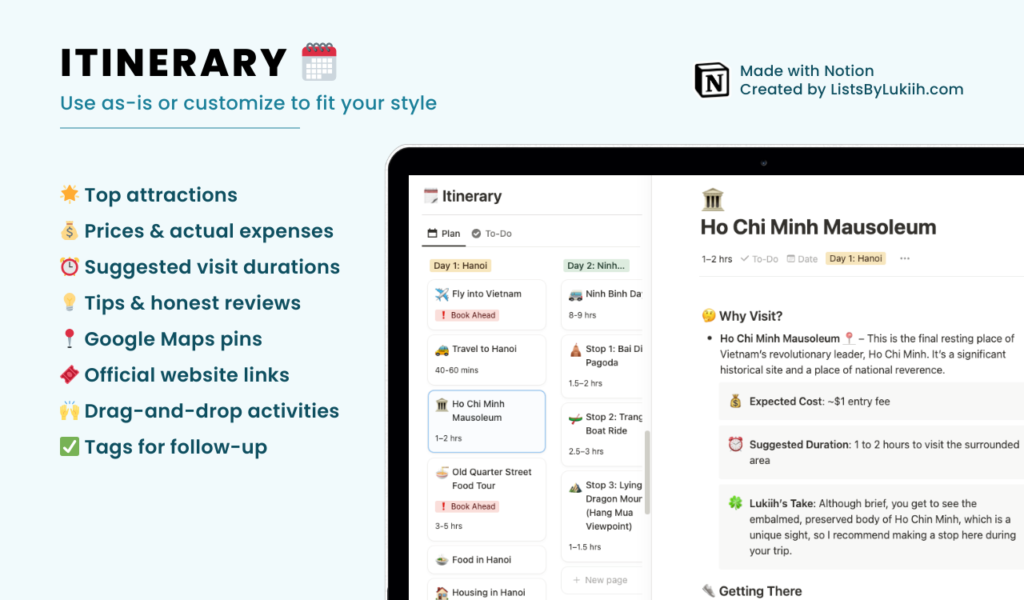
All prices mentioned here are in USD 💵 .
Hanoi (Days 1 & 3)
Fly into Hanoi and start your northern Vietnam trip there.
🍜 Why Visit Hanoi?
Hanoi, the capital of Vietnam, is one of Vietnam’s most visited destinations and the second largest city behind Ho Chi Minh City. It has a vibrant local community, a rich history, and an endless number of shops.
It boasts several streets of authentic food, which I recommend taking advantage of on your own or through a reputable street food tour.
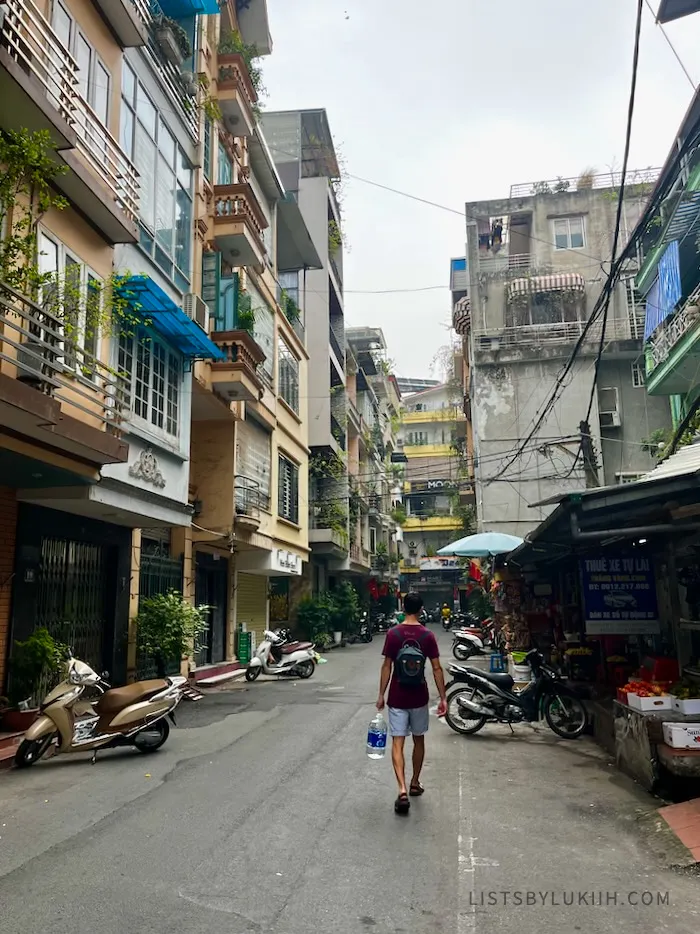
✈️ Getting to Hanoi
Hanoi is at the center of northern Vietnam, so the best way to get there is by flying into its airport, Noi Bai International Airport.
Once in Hanoi, you can get around on foot (primarily in the Old Quarter area) or use the Grab app if you’re uncomfortable walking around the hectic streets.
✨ Top Attractions in Hanoi
With two days in Hanoi, below are the tourist attractions worth checking out.
- Ho Chi Minh Mausoleum – The Ho Chi Minh Mausoleum is Hanoi’s most famous site. It houses the preserved body of the revolutionary President Ho Chi Minh, who united Vietnam. Admission is free.

- Hoan Kiem Lake – Located in the heart of Hanoi, the lake is surrounded by pagoda gateways (Ngoc Sơn Temple is the most popular one) and offers a break from the chaotic streets. Admission is free.
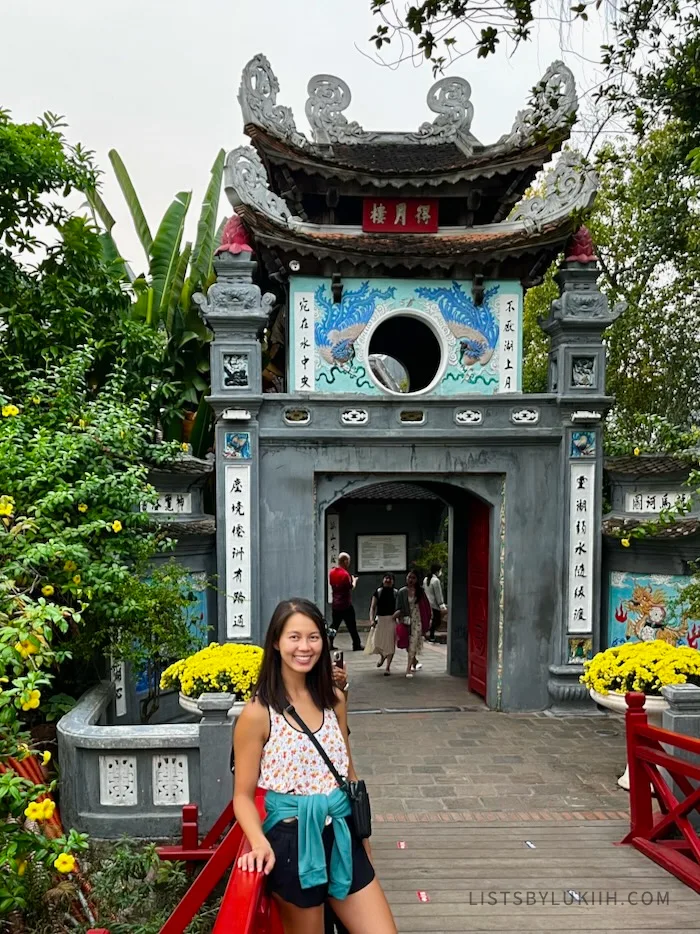
- Hanoi Street Food Tour – Hanoi is known for authentic, local food and is lined with restaurants and shops.
Most restaurants are not English-friendly, and food poisoning is a concern, so the best way to try different foods is through a well-rated street food tour, as I did.
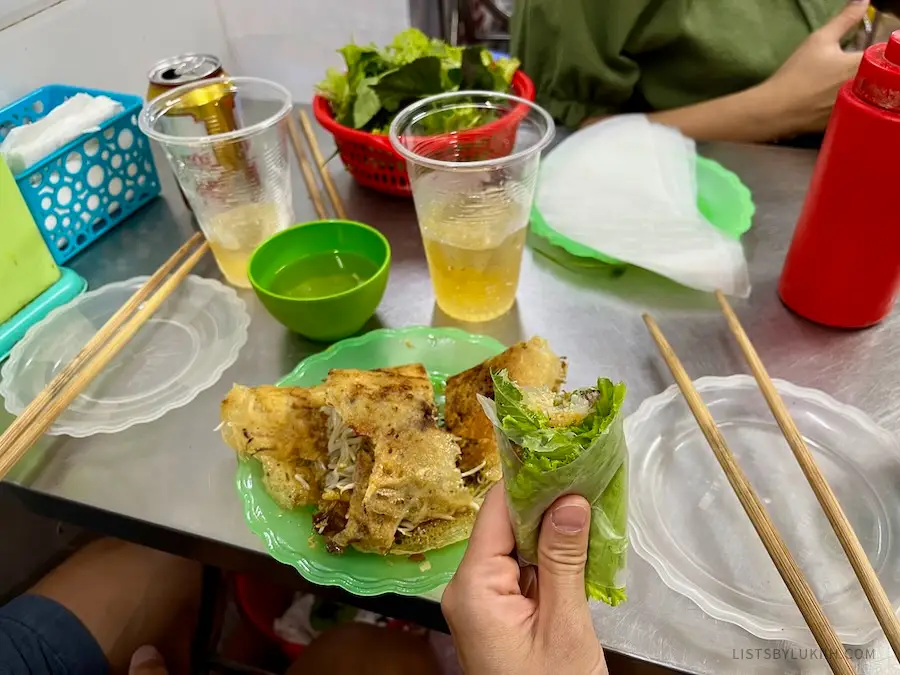
- Temple of Literature – This temple is considered one of the most beautiful buildings in Hanoi and is a popular photo spot.
- Old Quarter – Old Quarter is Hanoi’s main business and tourist hotspot. It’s comprised of 36 streets where you can see many historical sights and shops.
- Train Street – Train Street is a famous, narrow street where a train runs close to a handful of shops and cafes.
For many years, Train Street has had a “closed” sign warning visitors not to enter. However, as of 2024, you can still enter the street despite the sign. Locals typically stand near the entrance, offering to take tourists in for a small fee, but you can walk in on your own.
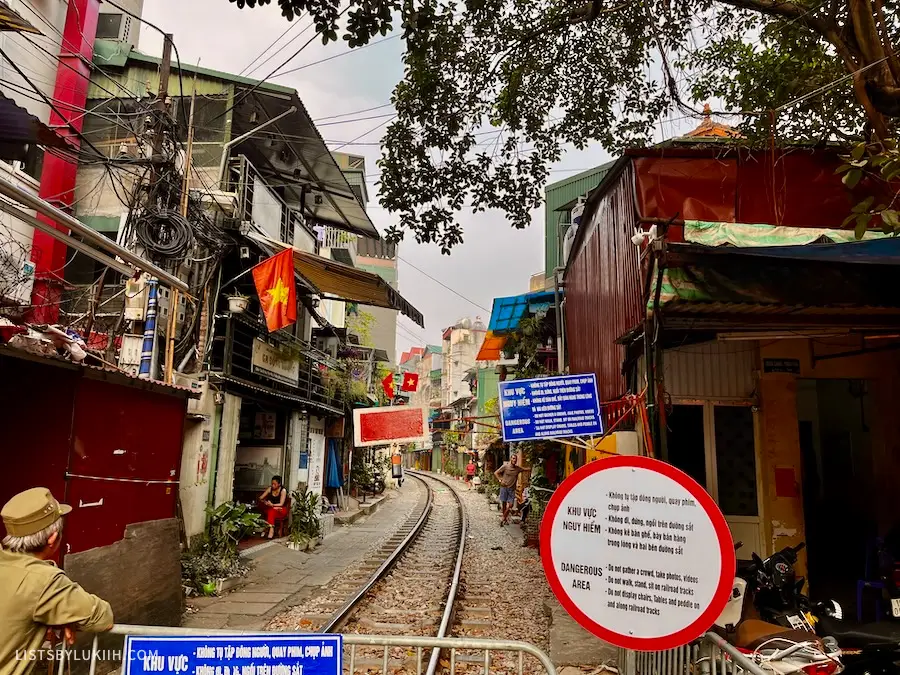
- Water Puppet Show – Water puppet is a traditional Vietnamese performance in which a dozen puppeteers control puppets while standing in water.
🏠 Where To Stay in Hanoi
Hanoi’s center is a fairly contained area, and there are several good places to stay:
- Old Quarter – Central, walkable, and packed with shops and eateries, but can be noisy and hectic.
- French Quarter – Quieter and more refined, with colonial architecture and wide streets, but has fewer budget-friendly stays.
- Tay Ho (West Lake) – More residential with lakeside views and cafes, but further from main attractions.
I stayed at Bi Eco Suites Hanoi, just outside of Old Quarter. It required me to walk a bit to get to where all the action was, but I liked staying in a quiet corner of the city. The rooms were spacious and modern.

🍀 Lukiih’s Tips for Hanoi
Here are my overall tips for visiting this city:
- Learn to cross the streets – As mentioned, Hanoi can seem chaotic to visitors. Motorbikes and vehicles drive in all directions and do not stop for pedestrians. It’s essential to learn how to cross the streets here.
- Limit your time in Hanoi – Hanoi is a bustling city with poor air quality, so if you’re hoping to spend most of your trip in more beautiful places in Vietnam, I would only spend one to two days in Hanoi.
- Don’t skip the food – The street food tour in Hanoi was one of the highlights of my trip.
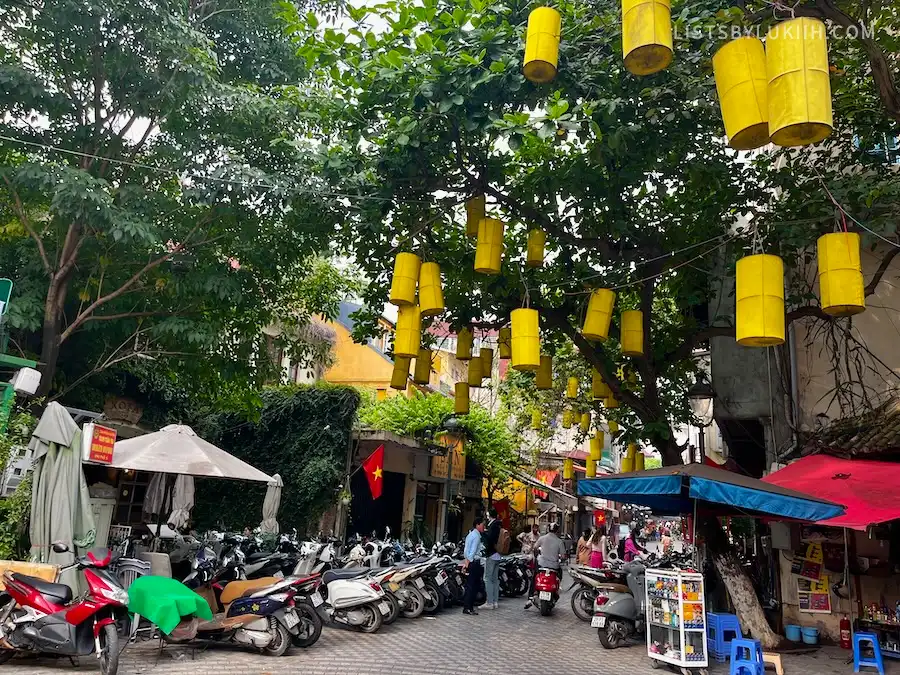
Ninh Binh (Day 2)
On your second day in Vietnam, travel south for a change of scenery.
⛰️ Why Visit Ninh Binh?
A UNESCO World Heritage Site, Ninh Binh is called the “Ha Long Bay on Land” because of its green rice paddies and limestone cliffs.
It’s known for its rivers, green rice fields, mossy pagodas, and limestone karsts. Ninh Binh is a blend of a typical Vietnamese city and natural landscapes.

🚌 Getting to Ninh Binh
Ninh Binh is located two hours (about 58 miles) south of Hanoi. You can get there by bus or train (a one-way ticket will cost between $8 to $15).
Many Vietnam transportation websites are challenging to navigate and are not English-friendly. Check Google Maps for trustworthy bus and train companies.
Ninh Binh can also be visited on a long day trip. (I did a day trip but wished I had stayed longer.) I booked this Ninh Binh day tour to prioritize the Bai Dinh Pagoda and Trang An boat trip.
✨ Top Attractions in Ninh Binh
Ninh Binh is known for several attractions and activities:
- Bai Dinh Pagoda – Bai Dinh Pagoda is the second-largest pagoda in Vietnam, located within a massive complex with several other temples, parks, and lakes. Admission is free.

- Trang An or Tam Coc River – These are two popular scenic rivers surrounded by lush trees and limestone karsts. Visitors typically take an hour-long boat rides passing through caves.
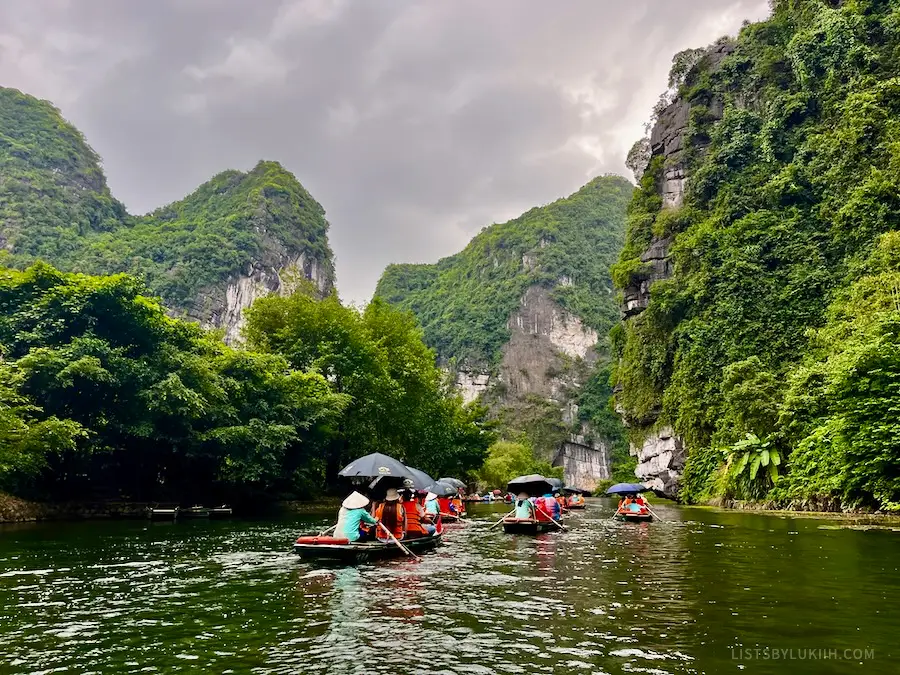
- Bich Dong Pagoda – Bich Dong Pagoda is an ancient mountain-side Buddhist temple surrounded by lush greenery. Admission is free.
- Lying Dragon Mountain and Mua Caves – The Mua Caves area features a 500-step climb to the top of Lying Dragon Mountain, which offers panoramic views of Tam Com.

- Hao Lu – Hao Lu is an ancient capital with a history in the feudal system. If you want to skip one attraction in Ninh Binh, I would skip this one.
🍀 Lukiih’s Tips for Ninh Binh
Here are my overall tips for visiting this small city:
- Stay overnight in Ninh Binh if you have more time – Ninh Binh is a beautiful place to escape chaotic Hanoi. If I could redo my Vietnam trip, I would have spent an extra full day in Ninh Binh and one less day in Hanoi.
- Expect tourism – Ninh Binh is much quieter than Hanoi and Ha Long Bay, but it’s still a tourist hot spot. Don’t expect to be the only one visiting the pagodas and rivers, especially during the high season.
- Choose a day tour that fits your interests – There are many Ninh Binh day tours to choose from, and they provide more or less the same things (e.g., transportation, buffet lunch, tour of popular sites). Choose tours based on the areas you want to visit.
Ha Giang Loop (Option 1 for Days 4-6)
On your fifth day in Vietnam, head north for an epic adventure.
🏔️ Why Do the Ha Giang Loop?
The Ha Giang Loop is an epic three- to four-day motorbike road trip through the rural mountains of northern Vietnam.
The loop is typically one of the highlights of Vietnam, as visitors travel through winding roads and beautiful mountain passes.

🏍️ How To Do the Ha Giang Loop
The Ha Giang loop starts in Ha Giang City, located six hours (170 miles) north of Hanoi.
If you’re an experienced motorbike driver, you can do the Ha Giang loop on your own at your own risk. If you don’t have experience, doing the loop with a tour operator is significantly safer.
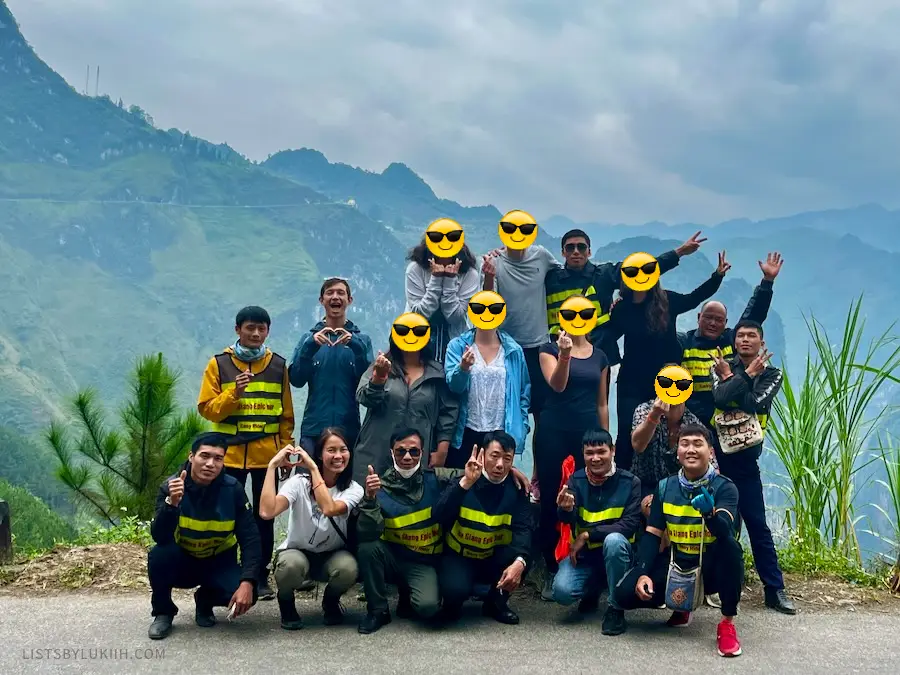
🍀 Lukiih’s Tip on the Ha Giang Loop
The Ha Giang loop was one of my most memorable and unique experiences. The mountains and views are stunning.
🏍️ The Ha Giang Loop: Honest Review & Tips
Sa Pa (Option 2 for Days 4-6)
If riding a motorbike through the rural mountains of Vietnam doesn’t sound appealing, visit Sa Pa instead.
A remote town west of Ha Giang City, Sa Pa has rice paddies, mountains, and a vibrant community of ethnic groups. It is the perfect place for nature lovers looking to hike, ranging from one to three-day treks.
Top attractions in Sa Pa include Cat Cat Village, Muong Hoa Valley, and Fansipan Mountain.
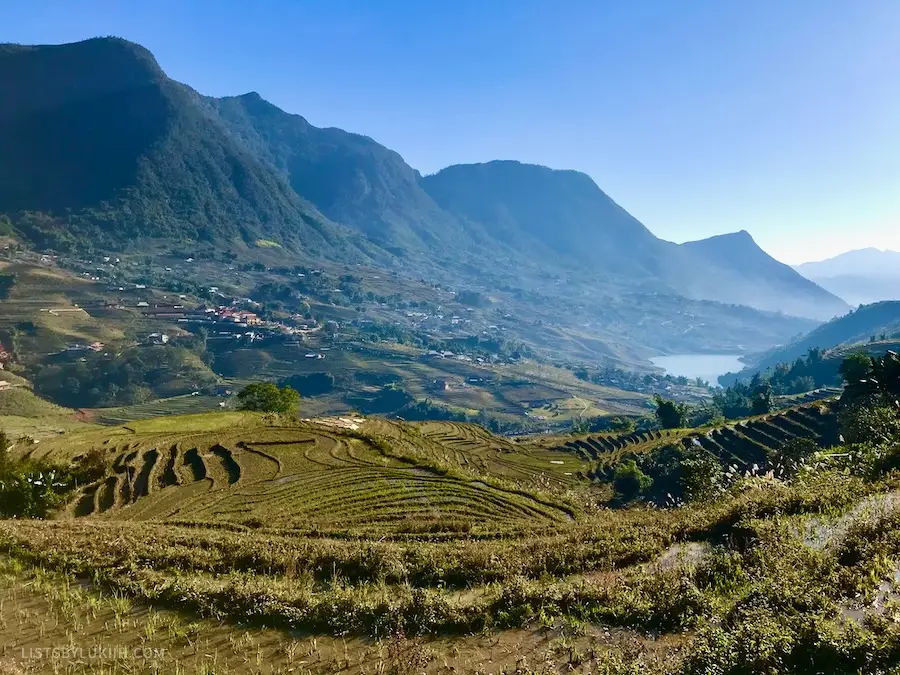
Ha Long Bay or Lan Ha Bay (Option 1 for Days 7-10)
Round out your Vietnam trip with a visit to the famous emerald waters.
💧 Why Visit Ha Long Bay/Lan Ha Bay?
Ha Long Bay is one of Vietnam’s most iconic attractions, featuring emerald waters surrounded by limestone cliffs.
Lan Ha Bay is part of the world-famous Ha Long Bay, but it’s also its own distinct area. I recommend visiting this bay instead.
Like its famous counterpart, Lan Ha Bay has beautiful limestone cliffs and emerald waters, but it’s a lot less popular and, therefore, more tranquil, less polluted, and has fewer junk boats.
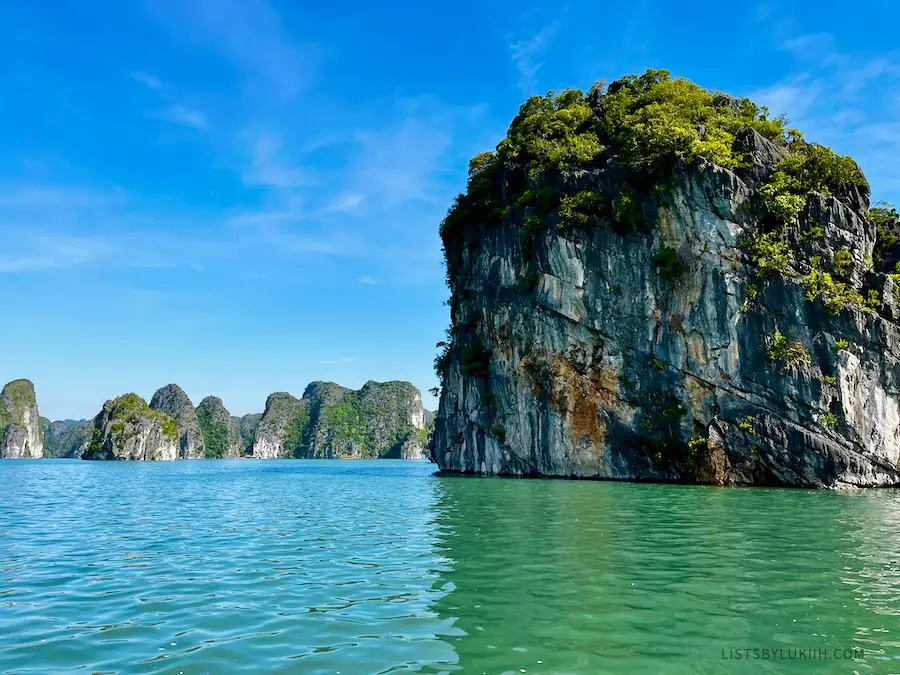
📍 Getting to Lan Ha Bay
When traveling to Lan Ha Bay, visitors tend to stay on Cat Ba Island, which is approximately three hours (about 90 miles) east of Hanoi.
You can get to Cat Ba Island by bus or charter seaplane. I took a bus from Hanoi to Cat Ba Island, which cost $28 for a round trip.
✨ Top Activities in Lan Ha Bay
Whereas the primary thing to do in the famous bay is to take a Ha Long Bay cruise, Lan Ha Bay offers a lot more activities, including:
- Kayaking
- Rock climbing/Deep water soloing (which is what I did)
- Visiting the beaches: Cat Co 1, Cat Co 2, and Cat Co 3
- Catching the sunset on Cat Ba Island
- Snorkeling and scuba diving

🏠 Where To Stay on Cat Ba Island
Cat Ba Island is a small and contained island, so there’s no really bad place to stay in.
I stayed at Dai Thuy Hotel, a no-frills hotel with good customer service. The rooms are nothing special, but it worked for me as I spent most of my time outside.
🍀 Lukiih’s Tips on Lan Ha Bay
Here are my overall tips for visiting this lesser-known bay:
- Visit Lan Ha Bay over Ha Long Bay – While Lan Ha Bay is part of Ha Long Bay, it’s not the iconic area that most people think of. If you like being active, I highly recommend choosing Lan Ha Bay over its counterpart.
- Try rock climbing above water – Lan Ha Bay is one of the few places in the world where you can deep water solo (aka rock climbing above water), even as a beginner. This is a great off-the-beaten-path experience.
🧗♀️ Deep Water Solo in Vietnam: Honest Review & Tips

Hoi An (Option 2 for Days 7-10)
Alternatively, head to central Vietnam to end your trip.
🏮 Why Visit Hoi An?
Hoi An in central Vietnam is known as the tailoring capital of the world and the food capital of Vietnam. The town is a well-preserved ancient trading port with lantern-lit streets, a riverside setting, and a blend of Vietnamese, Chinese, and Japanese influences.

📍 Getting to Hoi An
Take a domestic flight to Da Nang International Airport (DAD), then take a 45-minute shuttle, taxi, or private transfer to Hoi An.
✨ Top Attractions in Hoi An
- Get tailor-made clothes – Known as the tailoring capital of the world, Hoi An is the perfect place to get custom-made clothes. It’s a popular place to get a tailor-made suit or a formal dress.
👗 My Hoi An Tailor Experience: Prices & What To Know
- Eat Hoi An specialty food – Known as the food capital of Vietnam, Hoi An has local cuisine such as white rose dumplings and cao lau noodles.

- Day trip to Da Nang – Da Nang is easily accessible from Hoi An and offers a more relaxed experience. It’s famous for the Marble Mountains and Lady Buddha.
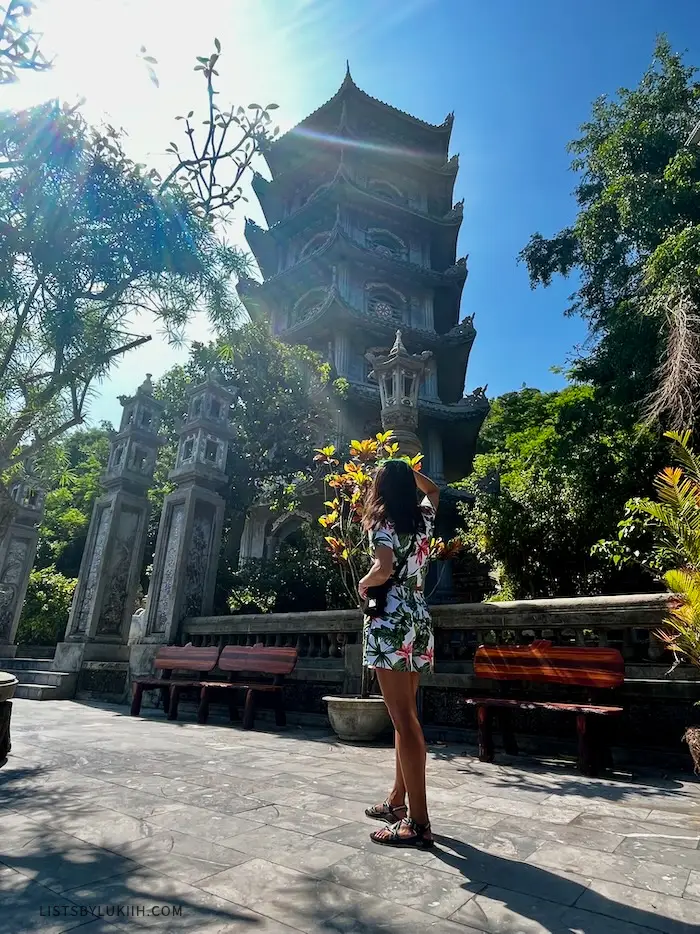
- Take a Hoi An cooking class – As Vietnam’s food capital, Hoi An naturally offers many great cooking classes paired with other local activities. I took this Hoi An cooking class. The food was phenomenal, but the ingredients and techniques were more advanced than I expected.
- Visit the night market – Hoi An’s traditional lantern-making has been around for 400+ years, and the central night market next to the Thu Bồn River is lit up with them at night. This is a popular time to also ride a lantern boat.
- Ride bamboo basket boats – These are iconic in Vietnam. According to a widely accepted origin story, Vietnamese fishermen created these unique, round vessels to successfully circumvent boat taxes imposed by the French.
- Bike to Tra Que Vegetable Village and An Bang Beach – Get outside Hoi An by taking a short bike ride to Tra Que Vegetable Village and the nearby beach.

- See Bamboo Circus – Bamboo Circus is a show featuring acrobatics, singing, and Vietnamese culture. It uses bamboo as props in inventive ways.
🏠 Where To Stay in Hoi An
There are several good places to stay in the Hoi An area:
- Old Town – This is the most atmospheric and walkable area. Old Town is charming but pricier, with limited vehicle access.
- An Hoi Island – Just across the bridge from Old Town, An Hoi is quieter with good budget options and river views.
- An Bang Beach – Peaceful beach areas 10–15 minutes from town by bike or taxi. It’s ideal for relaxation but less convenient for nightly walks in Old Town.
I stayed at Vincent’s House just north of Old Town. It comes with a well-maintained swimming pool, and it’s tucked away in a more residential and quiet area.
💰 My Vietnam Trip Cost: Budget Breakdown (2025)
Vietnam Trip Planner 2025
Make planning easier with my flexible, research-backed travel planner—shaped by real experience. It has:
- Up-to-date travel info
- A well-curated itinerary
- Practical, firsthand insights & tips
- A simple budget tracker
- A starter packing list
- Fully customizable sections
Built in Notion, this is the tool I personally use to plan every trip. I genuinely love it and creating a Notion account is free.
Lists by Lukiih is a small site I fund myself. Downloading my trip planner is the best way to support me and keep it running—thanks!
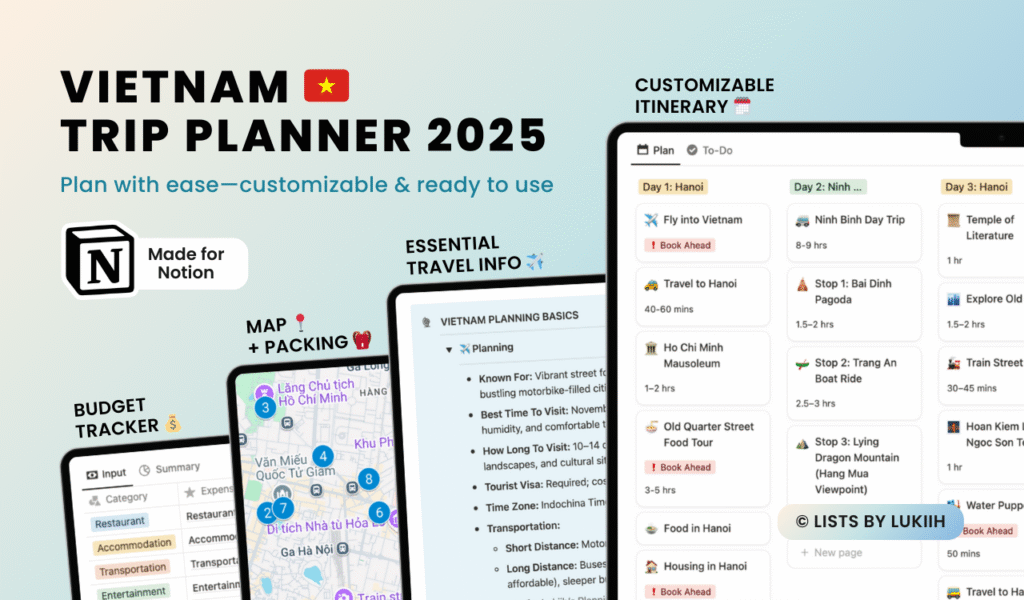
Vietnam Travel Guides
- 🇻🇳 Planning A Trip To Vietnam: 12 Practical Things To Know
- ⛰️ 10 Epic Days in Vietnam: A Unique & Active Itinerary
- 💰 My Vietnam Trip Cost: Budget Breakdown (2025)
- 🍜 Hanoi Guide: 14 Great Things To Do, Eat and Skip
- 🏍️ Ha Giang Loop: Firsthand Review & Tips
- 🧗♀️ Deep Water Solo in Vietnam: Firsthand Review & Tips
- 🏮 Hoi An Guide: 11 Great Things To Do + 3-Day Itinerary
- 👗 My Hoi An Tailor Experience: Prices & What To Know
